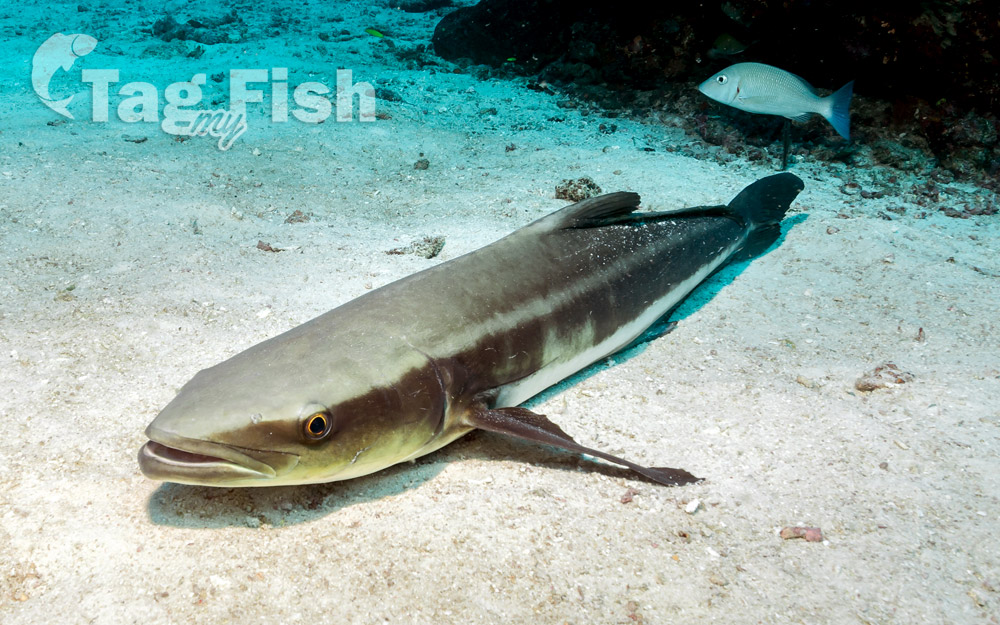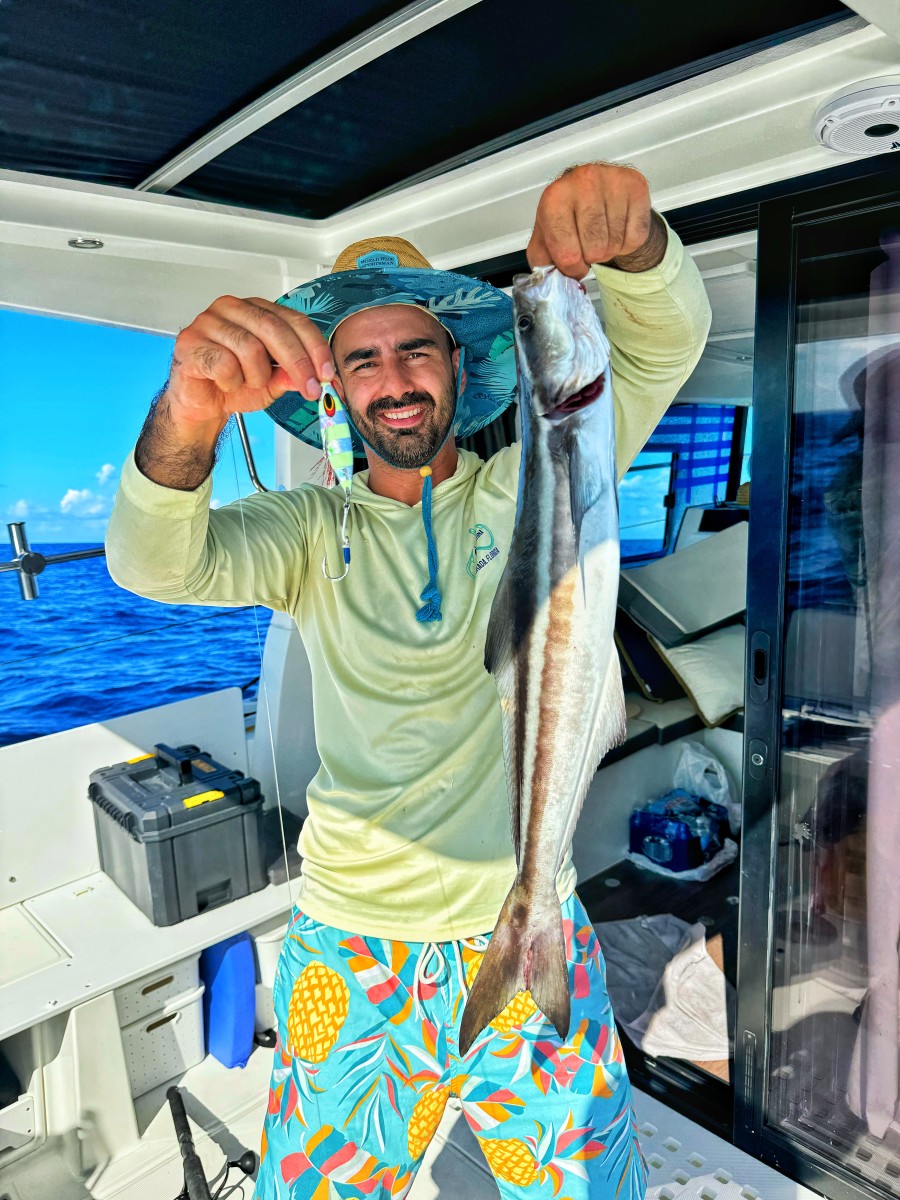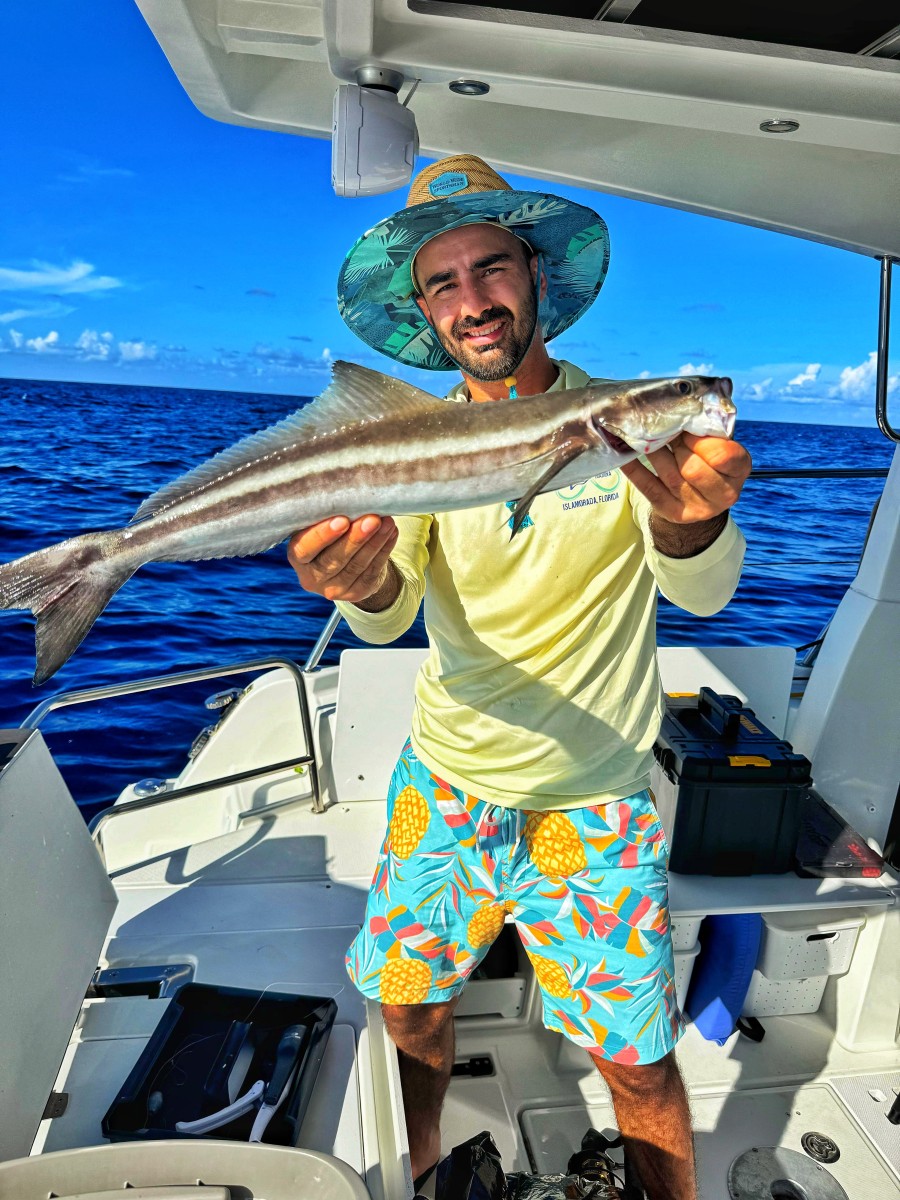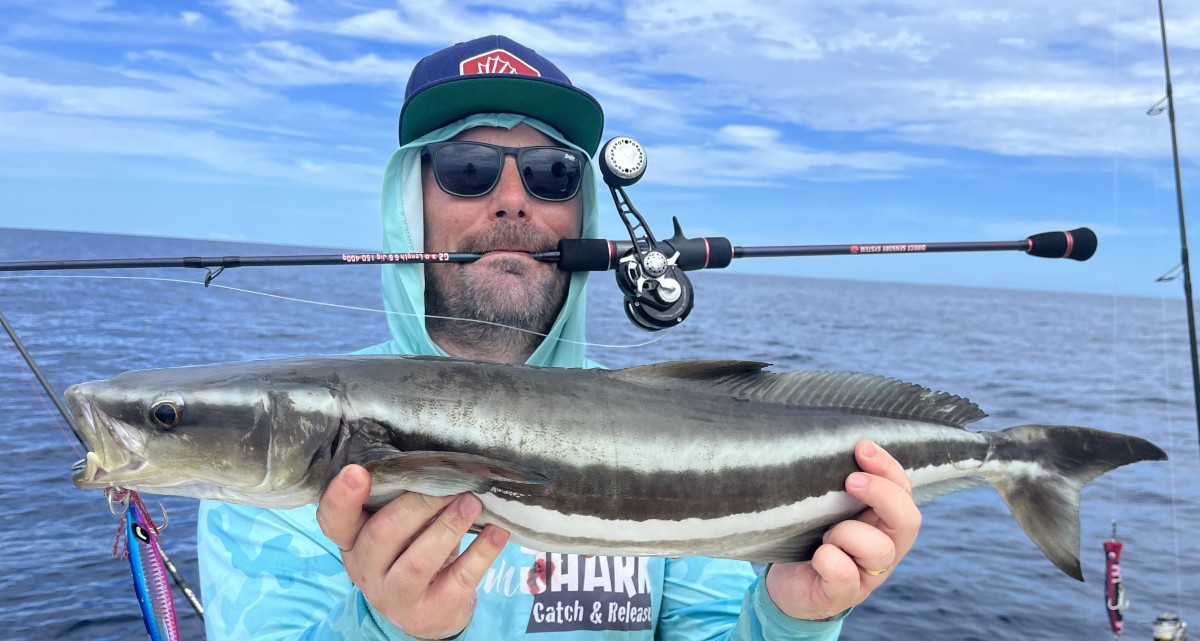Cobia
(Rachycentron canadum)

Classification
General data
The cobia (Rachycentron canadum) is a species of carangiform marine fish, the only extant representative of the genus Rachycentron and the family Rachycentridae. Other common names include black kingfish, black salmon, ling, lemonfish, crabeater, prodigal son, codfish, and black bonito.
Description
Attaining a maximum length of 2 m (78 in) and maximum weight of 78 kg (172 lb), the cobia has an elongated, fusiform (spindle-shaped) body and a broad, flattened head. The eyes are small and the lower jaw projects slightly past the upper. Fibrous villiform teeth line the jaws, the tongue, and the roof of the mouth. The body of the fish is smooth with small scales. It is dark brown in color, grading to white on the belly with two darker brown horizontal bands on the flanks. The stripes are more prominent during spawning, when they darken and the background color lightens.
The large pectoral fins are normally carried horizontally, perhaps helping the fish attain the profile of a shark. The first dorsal fin has six to nine independent, short, stout, sharp spines. The family name Rachycentridae, from the Greek words rhachis (spine) and kentron (sting), was inspired by these dorsal spines. The mature cobia has a forked, slightly lunated tail, which is usually dark brown. The fish lacks a swim bladder. The juvenile cobia is patterned with conspicuous bands of black and white and has a rounded tail. The largest cobia taken on rod and reel came from Shark Bay, Australia, and weighed 60 kg (135 lb).
Distribution and habitat
The cobia is normally solitary except for annual spawning aggregations, and it sometimes congregates at reefs, wrecks, harbours, buoys, and other structural oases. It is pelagic, but it may enter estuaries and mangroves in search of prey.
It is found in warm-temperate to tropical waters of the West and East Atlantic Ocean, throughout the Caribbean, and in the Indian Ocean off the coast of India, Australia, and off the Pacific coast of Japan. The cobia was first recorded in the Mediterranean Sea off Israel in 1978 and was recorded as far west as Libya in 2019, it is considered to have reached the Mediterranean as a Lessepsian migrant through the Suez Canal from the Red Sea. It is eurythermal, tolerating a wide range of temperatures, from 1.6 to 32.2°C. It is also euryhaline, living at salinities of 5.0 to 44.5 ppt.















